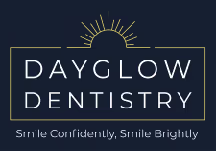Dental Blog
Dayglow Dentistry of Allen
Tips, insights, and updates to keep your smile healthy.
.avif)

.avif)
Welcome to Our Blog
At Dayglow Dentistry of Allen, we believe knowledge is just as important as treatment. Our blog is here to provide helpful tips, answer common questions, and share updates about the latest in dentistry — all designed to help you feel confident about your oral health.
Featured Blog Posts
.avif)
How to Help Your Child Feel Comfortable at the Dentist
A child’s first experiences at the dentist set the tone for a lifetime of oral health. This article shares simple, proven tips to make your child’s dental visits positive, stress-free, and even fun — with insights from Dr. Kim.
.avif)
5 Signs You May Need a Dental Implant
Missing teeth can impact more than just your smile — they can affect your health and confidence, too. In this post, we’ll cover the key signs that a dental implant may be the right solution for you, plus what to expect from the process.
Stay Informed and Stay Smiling
Want to learn more about dental health or schedule a visit? Explore our blog for helpful resources — and when you’re ready, we’d love to welcome you to our dental family.



